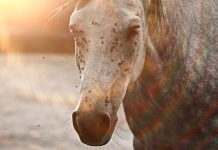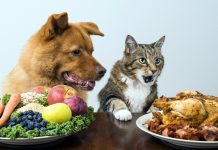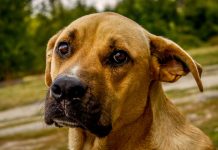The raccoon (Procyon lotor) is a short-legged, omnivorous mammal of the small bear family.
The raccoon lives in deciduous and mixed forests near water. It got its name because it gropes under stones and other hiding places in flowing water, looking for crabs or other food animals. It looks like he’s washing his food. As a cultural follower, he also lives in suburbs and parks. Landfills and campsites are popular foraging spots. Resting, sleeping, and rearing places for the young are abandoned badger and fox burrows, rocky crevices, hollow trees, but also sheds, attics, attics, or abandoned cars.
The adaptable new citizen polarizes: While some would like to see him exterminated, others plead for peaceful coexistence. But he is probably not the big scapegoat that he is often made into. As so often, the truth is more complex.
At dusk, the raccoons emerge from their daytime hiding places in tree hollows, old fox burrows, and human dwellings. They are easily recognizable by their greyish fur color, the ringed tail, the black face mask, and the hunchbacked posture when running. The raccoon is looking for food. The raccoon, which belongs to the family of small bears, is not choosy when it comes to its diet. He likes to hunt in the water and catch small fish, crabs, and frogs there. He often feels with his front paws underwater for prey. On land, birds, lizards, salamanders, and mice can also be among its diet. However, plant food is not scorned either, so it also eats fruit and nuts, for example. While there are times in the forest, the raccoon’s original habitat, when the food supply is scarce, it often finds a richly set table in human proximity. Food leftovers in the garbage and on the compost, fallen fruit, and filled food bowls for pets are tantamount to an invitation for the raccoon. As an adaptable and trainable animal, it has no problems surviving in parks and green areas.
Extermination or peaceful co-existence?

While some are calling for its eradication and thus vehement hunting, others are of the opinion that the raccoon is now part of our native animal world and therefore has the right to a peaceful existence. In terms of population ecology, it has also been shown that hunting or trapping with the aim of reducing population density is mostly unsuccessful: raccoons can compensate for population losses through an increased reproduction rate, and if they were “taken” from the surrounding areas, new animals would enter the then unoccupied areas moving up habitat.
Nevertheless, there is evidence of locally negative effects of the raccoon on the local wildlife. For example, the raccoon can locally pose a problem for the ground-nesting lapwing, amphibians, or the red kite. But as is so often the case here, the more diverse and structured nature is, the less impact raccoon predation has. Rather, the protection of the habitats should be in the foreground and not the consequence of hunting the raccoon. Suitable habitats should be made available, especially for smaller mammals, amphibians, and birds, and hiding places and a larger supply of food should be created by hedges or old trees. Hunting raccoons for species protection reasons should always be checked very carefully and can only be beneficial in individual cases.
If you hear rumbling and clattering in the attic at night, this can definitely indicate that the guest, who is sometimes uninvited in human settlements, has found his way into your own house. In order not to make an access and stay in your own home too easy for the visitor, the following instructions should be observed:
- Cut back trees and shrubs that reach or beyond the roof generously;
- Fit smooth sheet metal collars (1m high, 1m wide) over the gutter downspouts;
- Have a strong metal grille installed on top of the chimney;
- Close possible entrances consistently and with solid building materials;
- Lock the cat flap at night.
To prevent the raccoon from becoming a permanent guest in your garden, the following tips can help:
- Keep garbage cans and rubbish out of reach or secure containers with strong bungee cords. If possible, place the garbage cans at least half a meter away from fences, walls, and branches;
- Yellow bags should only be placed outside the door on the day of collection in the morning or kept in lockable boxes;
- Don’t throw meat, fish, dairy products, bread, and fruit in the compost, but the garden and vegetable scraps are fine;
- Do not leave leftover food in public wastebasket;
- Do not leave pet food in the garden or on the patio overnight.
Basically, if you behave prudently, it is possible for humans and raccoons to coexist peacefully.
Interesting facts about the raccoon

- The raccoon is between 41 and 71 centimeters long and weighs between 3.6 and 9.0 kg. It can also be heavier in colder regions.
- They have a longhaired coat, predominantly yellow-grey mixed with black. The dense underfur, which accounts for almost 90% of the total number of hairs, protects the animals from the cold and consists of 2.0 to 3.0 centimeters long hair.
- The face is characterized by a “Zorro mask” around the eyes. The dark mask is designed to reduce glare and thereby improve night vision.
- The slightly rounded ears are surrounded by white fur.
- Its teeth are made up of 40 teeth.
- Raccoons have a 20-30 cm long, curled tail.
- Raccoons have human-like hands with five fingers, which they use to gather food. They use it to open shells, doors and so much more.
- As omnivores, they primarily eat plants, nuts, fish, birds, insects, fruits, berries, seeds, debris, and small mammals. They are natural pest controllers.
- The paw print resembles a sole walker. The imprint of the hind paws is similar to the footprint of a small child. They can stand on their hind legs and examine objects with their front paws.
- Because of their short legs, they cannot run fast or jump far.
- Raccoons often put their food in the water before eating it. They have a keen sense of touch, and water enhances this effect. This analytical scanning gives you precise information about what is being consumed. You have an excellent memory.
- Apart from for orientation in the dark, the sense of smell is particularly important when communicating with conspecifics.
- Raccoons are able to hear very small sounds, such as those made by earthworms buried in the ground.
- Raccoons are excellent swimmers and climbers. They can stay in the water for several hours.
- The raccoon is occasionally kept as a pet, especially in the United States.
- Raccoons don’t hibernate. But they spend the coldest season in their hiding place.
- Raccoons make different sounds. They can hiss, growl, whistle and purr.
- Raccoons are adaptable to nocturnal animals.
- The natural enemies of raccoon cubs are lynx, eagle, eagle owl, and fox.
- While the raccoon was once thought of as a solitary animal, there is now evidence that it displays gender-specific social behavior. Related females (females) often share a common territory; unrelated dogs (males), on the other hand, live together in loose small groups of up to four animals.
- The mating season is between January and March. 2 months later 3-to 4 young are born, still without a face mask. The mother is very protective and teaches the cubs what and how to eat as soon as they come out of hiding. In autumn they are trained and independent.
- The average life expectancy is a few years. In captivity up to 20 years.
- Hunting and traffic accidents are the two leading causes of death. As a neozoan, the raccoon can be hunted in Switzerland all year round without a closed season, although there is no evidence that it threatens the native fauna. The FOEN writes: “We don’t want this non-native species and it can be shot”. However, many cantons have established closed seasons. It is not possible to permanently drive raccoons out of an area that represents a well-suited habitat for them through heavy hunting. They simply increase their reproductive rate, e.g. B. the foxes too, up to a certain limit, or animals from the surrounding area migrate into the free-range areas. The cost of removing all raccoons from a large area, even temporarily, usually far outweighs the cost of the damage they cause. Raccoons have been living in Swiss forests for around 35 years. Since 2003, he has been appearing more frequently, especially on Lake Geneva. But he is also on a tour of discovery in the Swiss Mittelland, in the Jura, and in the foothills of the Alps.
Raccoon characteristic

- Little bear with a striking black and white face mask.
- Long-haired fur that varies greatly in color; General appearance tends to be gray hair with a black topcoat, but almost black animals also occur. Black and white curled tail.
- About the size of a cat with a head-to-body length of 40-70 cm and a tail length of 20-30 cm.
- Weight around 5 to 9 kg.
- The typical gait of the sole walkers and with a round back
- Pawprint: the front paw resembles a hand, the hind paw print resembles a toddler’s footprint.
Distribution and position in the zoological system

- Originally southern Canada, United States to Central America.
- Introduced as a neozoan (newcomer) in Central Europe mainly for fur farming
- In Germany, it has two main areas of distribution. The larger and older distribution area is in southwest Germany around Kassel, the second and smaller northeast of Berlin, but both sub-populations are now in contact
- The first official settlement of the raccoon in Germany took place in Hesse in 1934 for hunting purposes. The second key point of the spread goes back to the flight animals of a fur farm in 1945 north of Berlin.
- The raccoon belongs to the class of mammals (Mammalia), to the order of carnivores (Carnivora), and to the family of small bears (Procyonidae).
Living space
- Structurally rich mixed deciduous forests, preferably with bodies of water nearby.
- Resting, daytime sleeping and rearing places for the young are mainly on trees in branch forks or hollows, but also ground sleeping places in abandoned badger and fox burrows.
- Sheds, attics, and attics are also used in urban areas.
- As a culture follower, he also lives in suburbs, parks, and gardens. On the one hand, settlement areas offer a rich and easily obtainable supply of food and, on the other hand, optimal cover and reproduction conditions in the protection of the human infrastructure.
Food

- Omnivore (i.e. both plant and animal food), being more forager than the hunter.
- Depending on the seasonal offer, mainly snails, worms, fish, frogs, birds, eggs, but also about 1/3 vegetarian food such as nuts, fruit, etc.
- The food is touched intensively with the front paws. When it forages in bodies of water, it looks like it’s washing its food, hence the name raccoon.
Sensory performance and behavior
- Generally solitary, however, so-called male coalitions can be formed; the females are often settled in neighboring territories of the mother animal
- The raccoon is color-blind, but otherwise, the eyesight is good, as is the hearing and especially the sense of smell.
- The front feet are extraordinarily flexible and sensitive, and their “thumbs” are sometimes even used to grasp objects. The raccoon “sees” with its paws
- Good climber and swimmer.
- Mainly crepuscular and nocturnal, resting in trees or dense vegetation during the day
- In central European latitudes relatively little activity in winter, especially when there is snow (then feeds on fat deposits).
Reproduction and life expectancy
- the Ranz begins in January/February
- after a gestation period of 63 days, an average of 3 young are born from April/May, later litters are not uncommon
- the juveniles remain in the den for the first few weeks, the female flies look for food on their own, later the female flies stay with their offspring in their home range
- Female offspring tend to stay close to their place of birth, young males migrate first, often forming male communities and sometimes returning to their place of birth
- Hardly any enemies in Central Europe. Only the lynx can pose a threat to adult animals, while eagles, eagle owls, and foxes can also pose a threat to young animals.
- However, the most common cause of death is traffic.
- Diseases: Rabies and distemper, but not endangering the population.
Conflict issues

- As new residents, raccoons can pose area-specific dangers to the local fauna. As a nest robber, especially of ground breeders, it can contribute to dangerous population losses.
- The raccoon in urban areas: the raccoon can transmit diseases such as distemper to pets. In some regions (especially in Hesse) it is a carrier of the raccoon roundworm – an infection (via orally ingested roundworm eggs) that can lead to serious tissue and nerve damage in humans through the larva migrans. Raccoons follow cultures and like to use barns and attics as shelter and breeding grounds. Due to their legacies (urine, feces, leftover food), vocalizations, and damage (e.g. the insulation and roof tiles), they are perceived as very annoying.






























